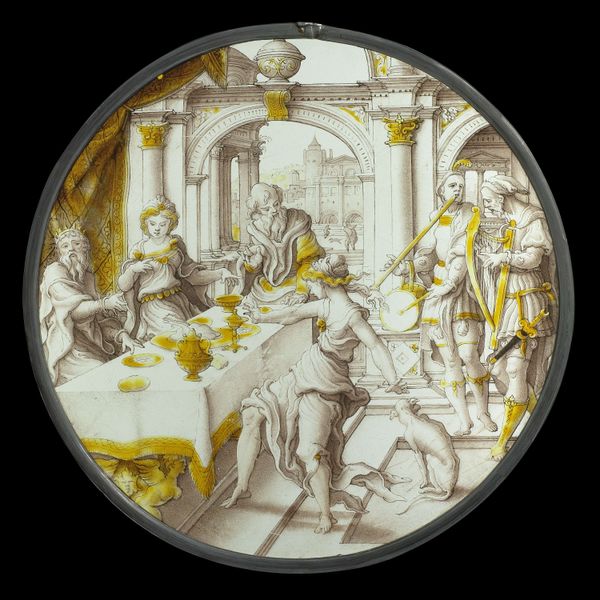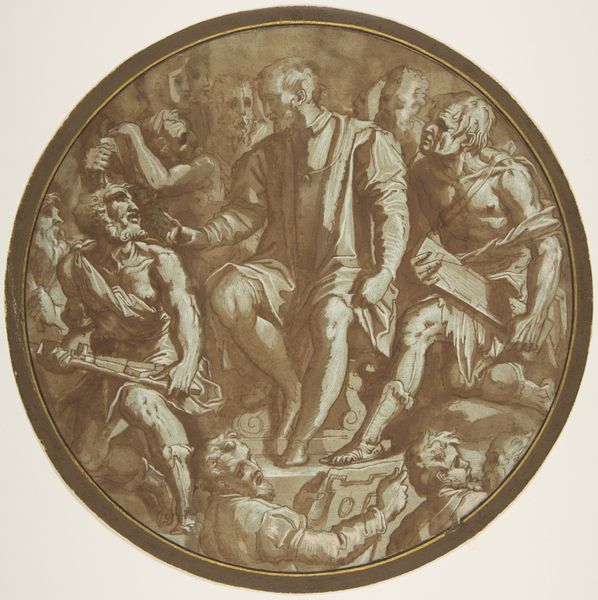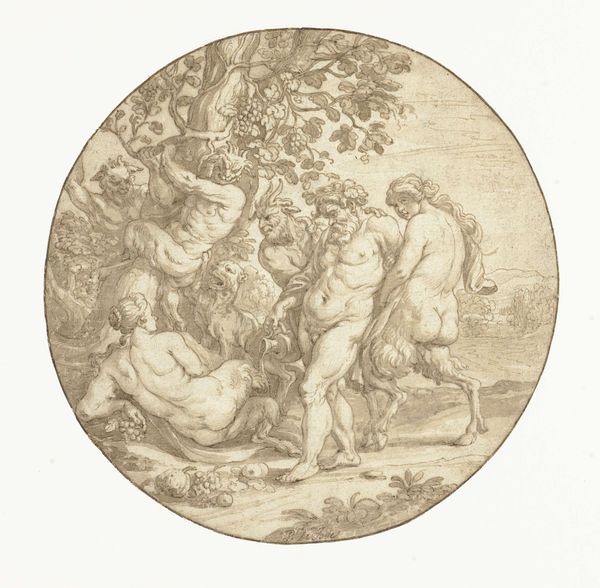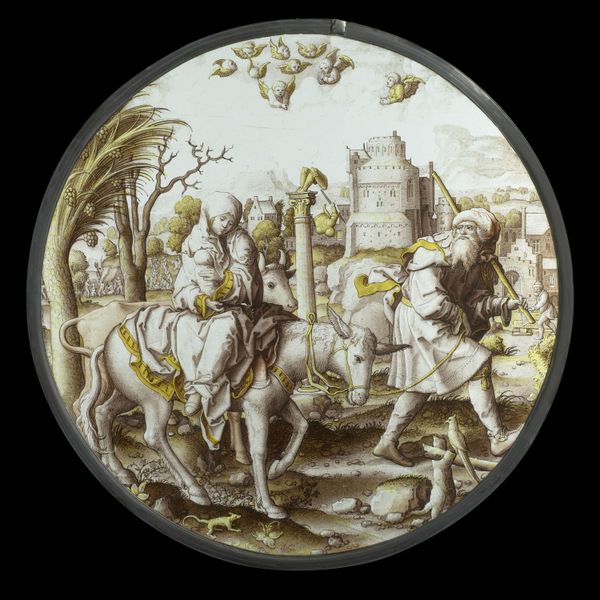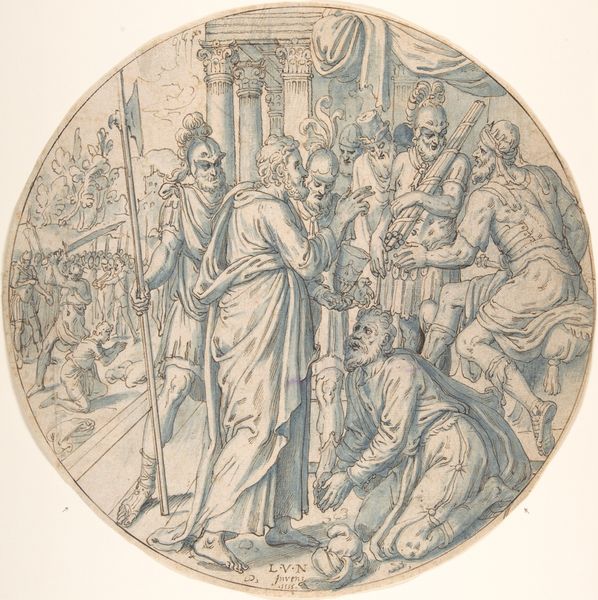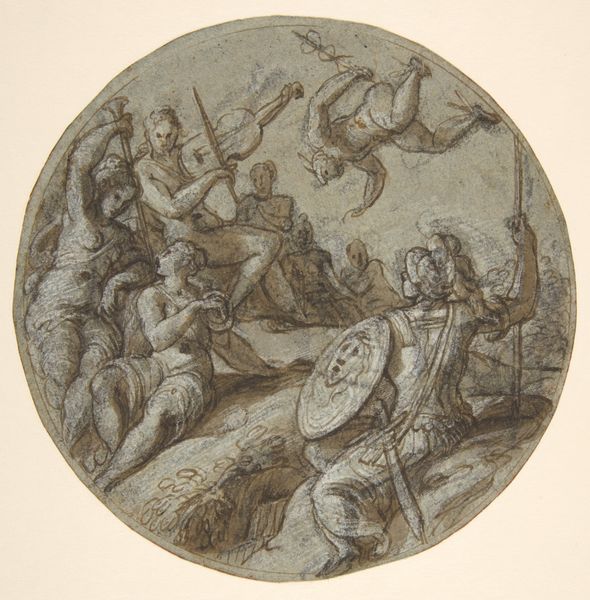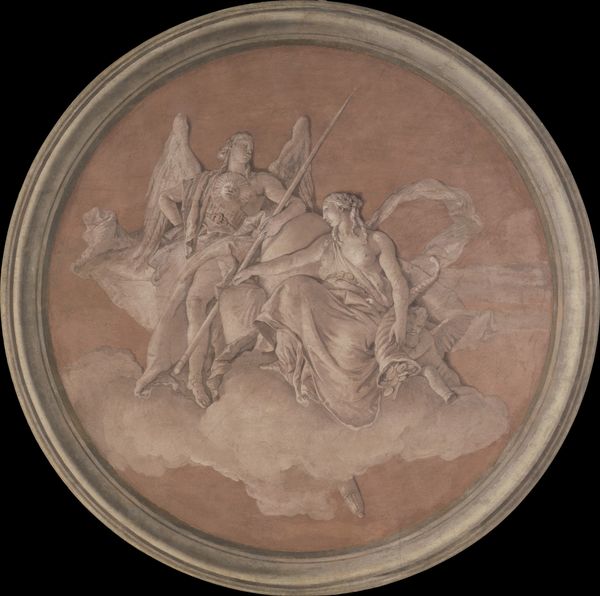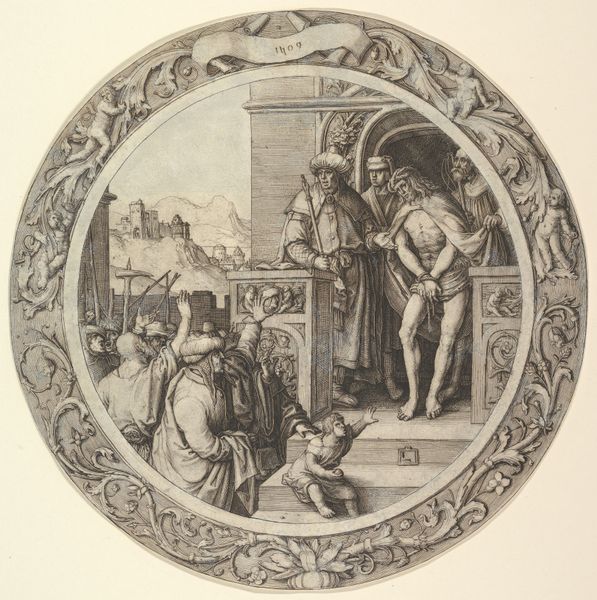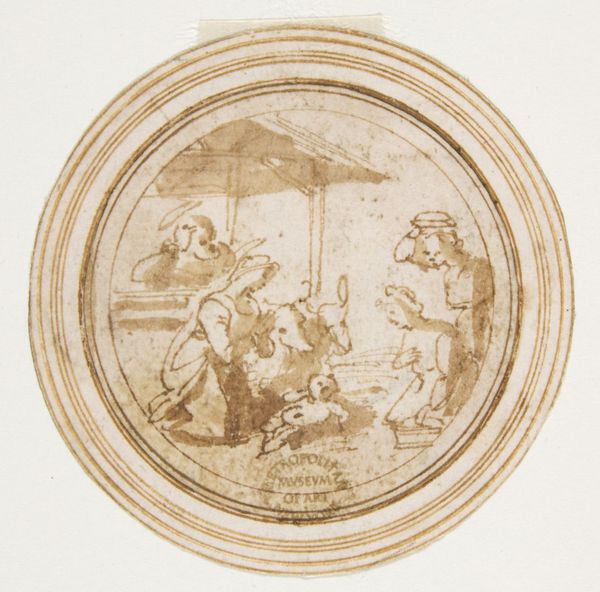
#
unusual home photography
#
stone
#
sculpture
#
memorial
#
fountain
#
sculptural image
#
unrealistic statue
#
sculpting
#
framed image
#
statue
Copyright: Rijks Museum: Open Domain
Dirck Vellert made this roundel, The Triumph of Eternity, with stained glass and silver stain sometime in the 16th century. We see a classical-style chariot, an angel, and a crowd of people with a castle atop a hill in the background. Vellert’s Northern Renaissance imagery, so evocative of classical ideals, should be understood through the institutions and historical context in which it was made. What kind of public role might this artwork have played? The scene suggests the triumph of Christ over death, perhaps alluding to the struggles for religious reform in the artist’s time. This was a period in which the Catholic Church faced challenges to its authority; in 1517, Martin Luther posted his 95 theses. The Reformation changed the production and reception of religious imagery, with new emphasis on individual belief. Art historians investigate such works through extensive research into the period, looking at the conditions of the time and reflecting on the meaning of art as something contingent on its social and institutional context.
Comments
No comments
Be the first to comment and join the conversation on the ultimate creative platform.
